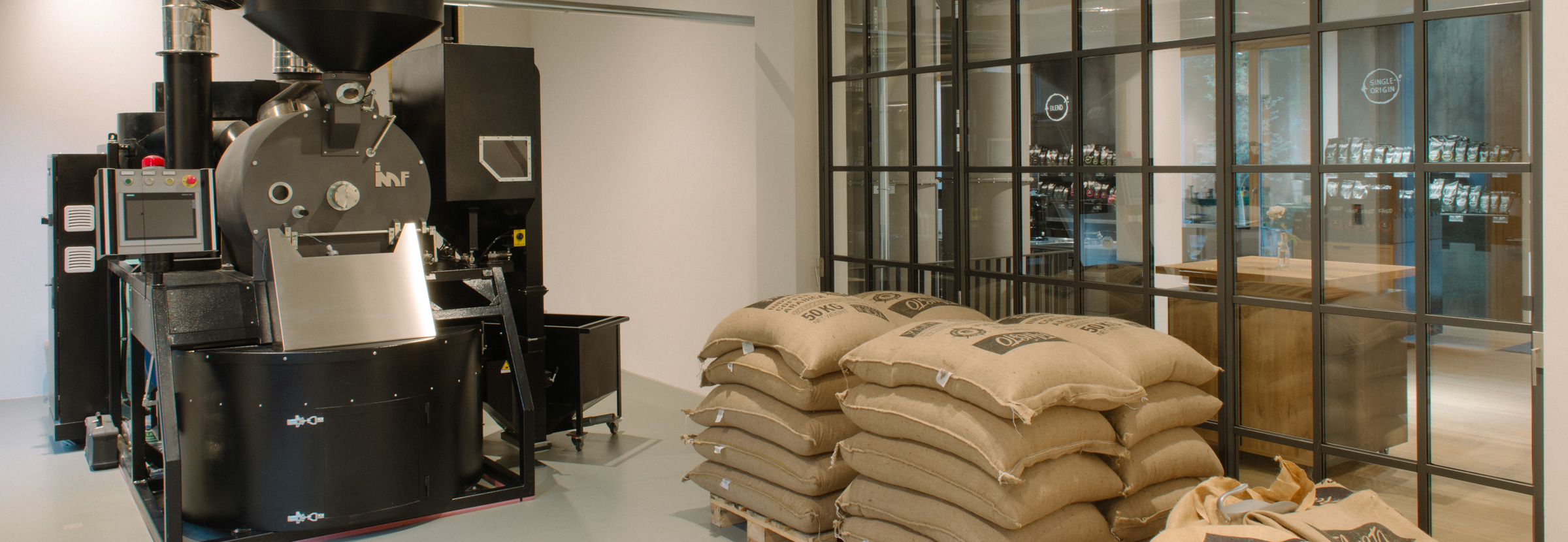How can coffee roasters design an appealing and efficient roasting space?
For many roasters, designing a roasting space is one of the first steps to consider when getting started. There are a number of factors to account for when designing a roastery – including storage space for green and roasted coffee, the size of the roaster, ventilation systems, and so on.
By taking these factors into account, roasters can design an efficient workspace that will improve their workflow and help them to remain profitable. However, in many cases, roasters want to design a roasting space that is as suitable for customer tours as it is for roasting coffee – a trend that is becoming more and more prominent nowadays.
To learn more about how roasters can do this, I spoke to one of the Sales Managers at IMF, Giorgio Mosca, and owner of Fausto Kaffeerösterei, Klaus Wildmoser. Read on for more of their insight.
You may also like our article on streamlining quality control in your coffee roastery.
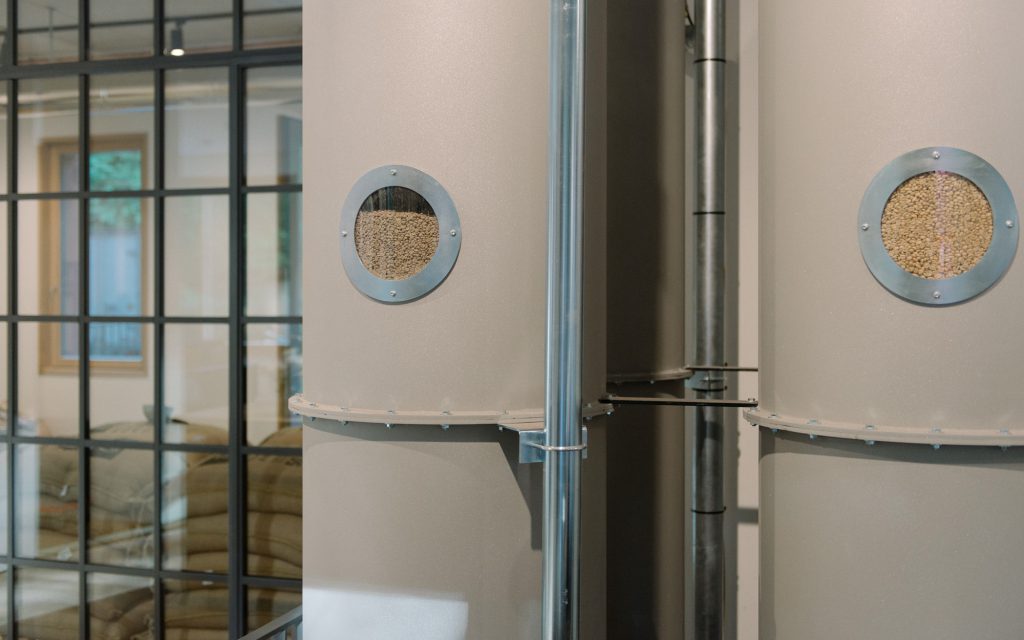
What should you consider when designing a roastery?
Giorgio explains the first and most important step to take when designing your roasting space – consultation.
“When we plan to redesign an existing roasting space, or design a new roastery, we must first establish a relationship with the customer,” he says. “We arrange a consultation to meet the client and fully understand their needs and level of roasting experience.
“Once we establish their needs, IMF can find the best possible solution for their business, based on the provided information,” he adds.
Every roaster has different needs, so these must be taken into consideration when designing a roasting space. For instance, some roasters may need to host workshops or cuppings for wholesale customers, so adequate space is necessary.
The ultimate goal is for the roaster to reap as many benefits as possible from their workspace – no matter the size and style of the company.
Storage
In order for a roastery to be efficient, the design of the space must be carefully planned, with a number of factors taken into account. These include deciding where the green coffee will be delivered and stored, to where roasted coffee will be packaged and stored, for example.
“Roasters need quick and easy access to green coffee at all times,” Klaus says. “We have ten silos at our roastery [which allows the roasters to dispense green beans].”
From here, roasters need to consider how green coffee will be moved to their machine – which means ensuring they have the space to move large volumes of green beans around the roastery.
“We spent several months optimising the design of our roasting facilities, as well as considering how we operate throughout the space,” Klaus explains. “We follow a rigorous day-to-day production plan to streamline operations.”
“Our production area is well organised so that green beans can be easily transported to the roaster,” he adds. “Once the coffee is roasted, it then needs to be moved to the roasted coffee silos.”
Roasted coffee is a much less stable product than green coffee, which can stay fresh for up to 12 months when stored correctly. However, it’s important that both are stored in optimal conditions – namely cool, dry, and dark environments with minimal contact with oxygen and no contaminants. Ultimately, this makes storage a very important consideration when first designing an efficient roastery.
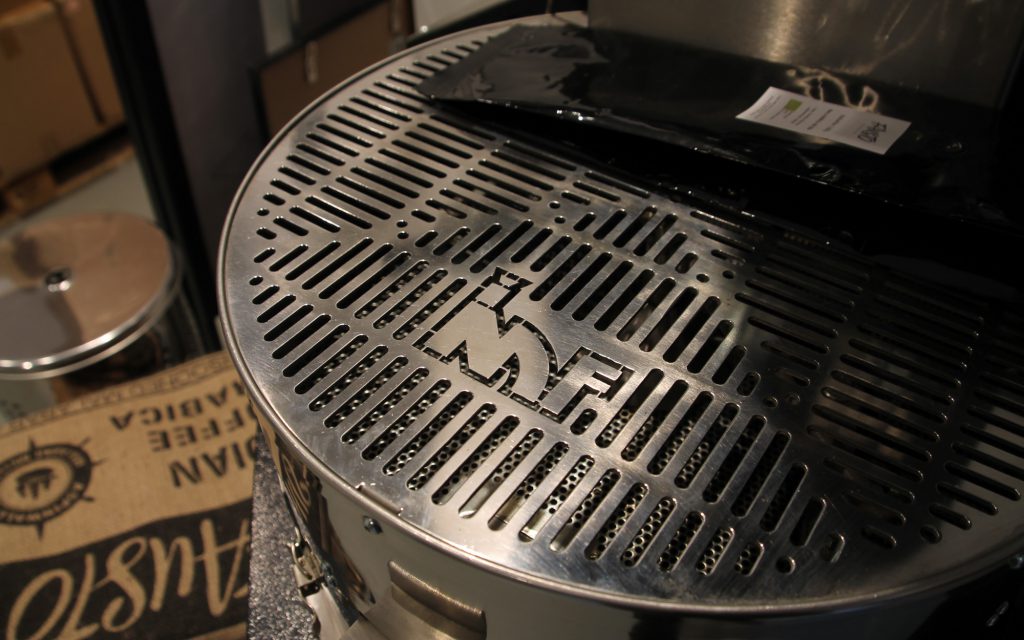
Size of the roaster
As well as other considerations, the size of the roaster itself needs to be accounted for.
“When designing a new roasting facility, IMF considers the size and capacity of the roaster, as this machine is at the heart of every roastery,” Giorgio says.
While the capacity of sample and small-batch roasters can range from 2kg to 30kg, batch size for larger commercial roasters can be up to 240kg. Ultimately, the size of the roaster will also influence which type of ventilation system is needed – meaning careful design of the workspace is essential.
“After we have accounted for the footprint of the roaster, we need to design the space around it so that there is sufficient room for other operations,” Giorgio explains. “Roasters often need designated areas to package coffee, so we must factor these in, too.”
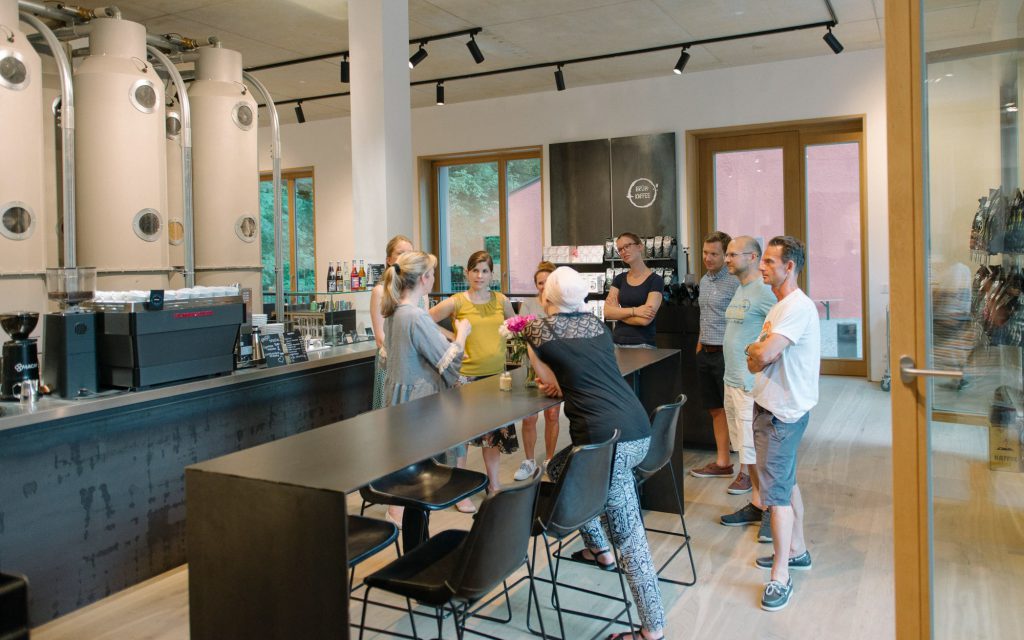
Why should roasters make their workspace visually appealing?
Although efficiency is rightly the biggest priority when designing a roasting space, more and more coffee professionals are ensuring their roasteries can be customer-facing.
This can be important for a number of reasons; roasters may regularly bring customers in for tours or want to host educational events, for instance.
Ultimately, this means that as the specialty coffee sector has grown, creating unique spaces has become more of a requirement for many roasters and coffee shops.
Klaus tells me how creating a visually appealing roastery helped to change the atmosphere of Fausto’s space.
“As we designed our new roastery, we were conscious that Munich is a very modern city,” he says. “IMF helped us make our roastery modern and functional, as well as eye-catching for our customers.
“Our roasting space is located next to a river, [so we included] large windows in our roastery [for employees and visitors to enjoy],” he adds.
More and more roasters are incorporating café areas into their design, too, which means creating a visually appealing roasting space is important. Ultimately, striking and well designed roasteries can leave a lasting impression on customers.
Furthermore, as consumers continue to become more educated about higher-quality coffee, designing a space where customers can view the roasting process can also add significant value to your business. Many customers are likely to be interested in understanding more about how coffee is roasted, so incorporating a viewing area into your roasting space could be beneficial.
“Many of our visitors are interested in the roasting process, but they also enjoy seeing the espresso machines we have in our coffee lab area,” Klaus tells me.
However, he adds that attracting customers is about more than just a visually appealing roastery.
“The whole package is important,” he says. “A well-designed space, friendly and welcoming baristas, and the quality of your beans.”
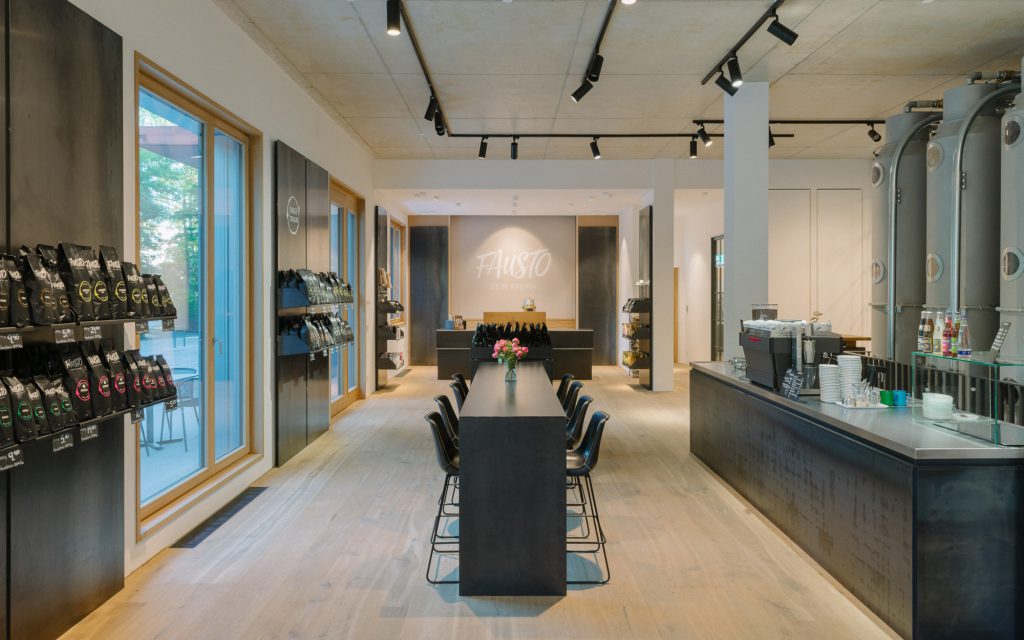
Considering branding when you design your space
With more and more specialty coffee companies launching in many countries around the world, branding and marketing are becoming more important than ever.
Specialty roasters and coffee shops must be able to demonstrate to the consumer how their business is different from others in the industry – typically through brand authenticity.
The design of a roaster or coffee shop is a large part of this. Business owners need to consider how the style of their roasting space ties in and complements their brand.
One of the ways that they can do this is choosing which materials and colours to include in their roastery.
“Today, many industrial elements are incorporated into roasting spaces,” Giorgio says. “Inspired by 1950s New York, this style is a combination of materials such as wood and metal; specifically stainless steel and black metal.”
However, while this design style may suit roasters who opt for more rustic branding, it may not be suitable for all kinds of roasters. Some may prefer a more minimalist design, while others may be looking for more vibrant colours.
“It’s important that we can produce a specific design style for each client, while prioritising functionality at the same time,” Giorgio says. “For more modern coffee shops and roasters, we need to balance aesthetics and efficiency.
“The biggest challenge is finding the right balance between the materials we use and the needs of the client,” he adds. “For example, with a previous customer, we had to use stainless steel pipes instead of rubber [to coincide with their branding].
“Meanwhile for other clients, we designed particular shapes and included certain colours to be more in line with their branding,” he says. “A significant part of this is recognising that the space is shared between many people, including roasters, baristas, and consumers.”
Every roastery owner will have their own approach to designing their space, so partnering with a tailor-made roaster design solutions company like IMF will ensure that the space is both efficient and visually appealing.
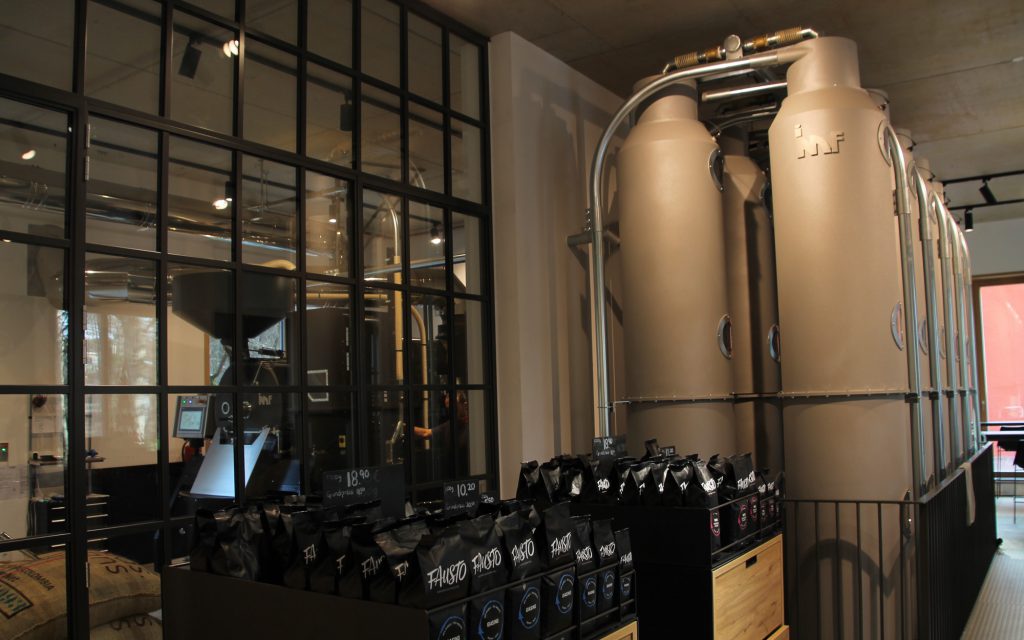
Efficiency in a roastery is essential to create a profitable, successful business. While the roaster may be the heart of the company, other operations also need to run smoothly. As such, designing your space around the roaster will only serve to streamline workflow.
Ultimately, while efficiency is vital, more and more roasters are starting to focus on the visual appeal of their roasting space. By customising the colours, materials, and styles of your roastery, you have the opportunity to align the premises with your brand and communicate brand authenticity more effectively.
Enjoyed this? Then read our article on equipping your coffee roastery: where to start.
Photo credits: Fausto Kaffeerösterei
Perfect Daily Grind
Please note: IMF Roasters is a sponsor of Perfect Daily Grind.
Want to read more articles like this? Sign up for our newsletter!

